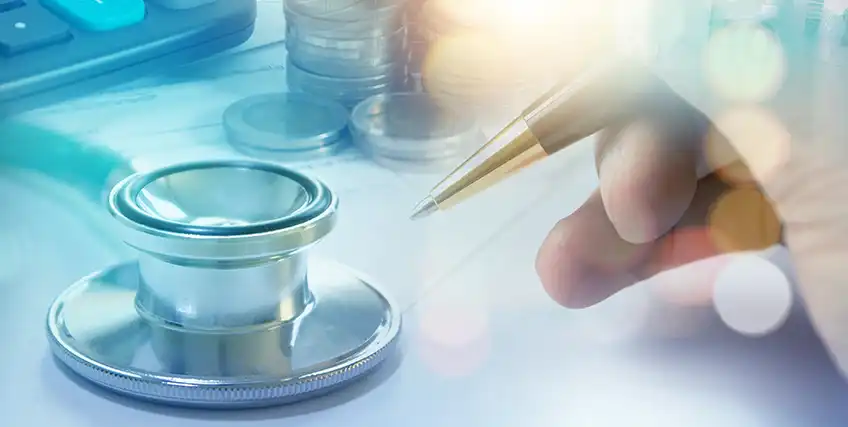As of May 28, 2021, the Paycheck Protection Program has run out of funding. You can learn more about the PPP with our COVID-19 resource hub.
A new round of relief is now available to small business owners looking for relief. The Economic Aid to Hard-Hit Small Businesses, Nonprofits and Venues Act, (Economic Aid Act or EAA) offers businesses to ability to take new first or second PPP loans. Those options are open to borrowers as of January 15
th, 2021.
The Economic Aid Act was signed into law on December 27, 2020, to help with COVID-19 economic relief. After that, the Small Business Administration (SBA) had ten days to release guidelines for Paycheck Protection Program (PPP) loans under the new legislation. Since January 6, the Small Business Administration has released several documents as guidance for first time borrowing as First Draw PPP Loans and second time borrowing as Second Draw PPP Loans.
What small business borrowers should know before applying for a new PPP loan.
Small businesses should get to know the rules for first and second time loan eligibility before applying for PPP funds. In particular, we are going to focus on:
- First Draw PPP Loans
- Second Draw PPP Loans (or PPP2)
- Eligibility for small businesses and non-profits
- Borrowing procedures
- Calculating loan amounts
- New covered periods
- Payroll and Non-Payroll Costs
- Loan forgiveness
One of the big things to know is the program deadline:
the last day to apply for and receive a PPP loan is March 31, 2021.
The New Round of PPP
This most recent coronavirus relief bill authorized a
total of $284 billion for the Paycheck Protection Program.
Specific set-asides were
included in the appropriations with $40 billion going to smaller, first-time borrowers with 10 or fewer employees and $20 billion going to first-time borrowers.
This is the first influx of funding to the program since April and allows small businesses to apply for the second round of PPP. Because of the new Paycheck Protection Program funding, borrowers have two options:
- If you were not able to get a PPP loan first round, you have an opportunity to apply as a first-time borrower for a First Draw PPP Loan.
- If you have already received and spent the PPP funds from your first loan, you can apply for a Second Draw PPP Loan.
The December legislation is focused on small and medium-sized businesses (SMBs) and equitable distribution of funds by the SBA and financial institutions to a variety of businesses. After Congress and President Donald Trump approved the package, the Treasury Department and SBA worked out the details.
We’re going to dive into some of the specifics that have been laid out by lawmakers in the legislation and by the SBA in their IRFs.
The Economic Aid Act and PPP
When another round of PPP funding was approved in the coronavirus stimulus bill, a lot of the basic conditions surrounding the loans remained the same from the CARES Act in April. The bill did introduce a significant new program:
second draw paycheck protection program loans. This allows small business owners who received PPP funding earlier to apply for additional pandemic relief.
Both loans from the Paycheck Protection Program have the
same terms and conditions:
- The guarantee percentage is 100 percent.
- No collateral will be required.
- No personal guarantees will be required.
- The interest rate will be one percent.
- The maturity is five years.
- All loans will be processed by all lenders under delegated authority and lenders will be permitted to rely on certifications of the borrower to determine the borrower’s eligibility and use of loan proceeds.
Borrowers still have to use
60 percent of the loan on payroll costs and
40 percent on non-payroll costs, but there are
additional covered expenses:
Eligible non-payroll expenses must be incurred during the borrower’s covered period. These expenses must also be paid before the next billing date to maintain eligibility for full forgiveness. Non-payroll expenses that are incurred outside of the covered period, or are not paid before their next billing dates will lose eligibility for forgiveness.
- New non-payroll costs are:
- Covered operations expenditures: business software, cloud computing service, or other human resources and accounting needs that help the business function.
- Covered property damage cost relating to the 2020 protests that were not covered previously or by insurance.
- Covered supplier cost includes purchasing essential goods for the business and purchases made pursuant to a contract prior to taking out the PPP loan.
- Covered worker protection expenditure: personal protective equipment and any adaptive investments to help comply with health regulations.
All of these costs are eligible for both PPP loan programs and borrowers should use PPP funds to pay for these costs. Spending the PPP loan on these covered expenses ensures that the loan will be forgiven.
Covered Period and Loan Forgiveness Timeline
The
covered period has been
changed in the Economic Aid Act. It allows the borrower to choose when their covered period ends. The loan recipient has the option to choose a covered period ending in between 8 and 24 weeks after the loan’s origination. Covered periods can extend beyond the March 31, 2021 deadline.
According to the SBA, loan forgiveness will be provided for the sum of documented covered payroll and non-payroll costs, as defined above, as long as the ratio is 60 percent payroll and 40 percent non-payroll. If the borrower uses the PPP funds for forgivable purposes, then the amount of
loan forgiveness can be up to the full principal amount of the loan and any accrued interest.
The business’s “loan forgiveness covered period” is the period beginning on the date the lender disburses the PPP loan and ending after
8 weeks or 24 weeks. For example, a loan dispersed on January 25, 2021, with a 24-week covered period, would end on July 12, 2021.
The borrower must submit a loan forgiveness application to its lender within
10 months after the end of the loan forgiveness covered period.
Who Qualifies for a New PPP Loan Under the Economic Aid Act?
The Economic Aid Act
clarified PPP eligibility by specifying eligible entities must be one of the following:
- businesses,
- certain non-profit organizations and 501(c)(6)s,
- small news organizations,
- housing cooperatives,
- veterans’ organizations,
- tribal businesses,
- self-employed individuals,
- sole proprietors,
- independent contractors,
- and small agricultural co-operatives.
The new legislation does not allow publicly traded companies to apply for PPP funding. It also does not allow applicants to receive both a PPP loan and a Shuttered Venue Operator grant from SBA.
To be eligible, the business must have been in operation on February 15, 2020, and cannot have permanently closed. The loan must be necessary to support the ongoing operations of the business and the funds will only be used for covered payroll and non-payroll costs.
What are the Eligibility Requirements for First and Second PPP Loans?
First Time PPP Borrowers
Once a borrower knows they are eligible, they have to calculate their maximum loan amount using
calendar 2019 or 2020 figures. To do this:
- Calculate monthly payroll costs by dividing annual wages by 12.
- Compensation in excess of an annual salary of $100,000 must be subtracted from the annual payroll total to get the average monthly qualifying payroll.
- Multiply the monthly payroll costs by 2.5
- If you run a hotel or restaurant (anything listed with NAICS Code 72) then you can borrow up to 3.5 times your monthly average payroll costs.
- Your PPP loan amount is the lesser of $10 million or the calculated amount (from steps 1 and 2).
- When calculating the maximum loan amount, you can add the outstanding amount of any Economic Injury Disaster Loan (EIDL) made between January 31, 2020, and ending on April 3, 2020, that you seek to refinance.
All new borrowers are
allowed to use 2019 or 2020 as their base period for purposes of calculating their maximum loan amount. This ensures that borrowers are “able to obtain funding on terms commensurate with existing PPP borrowers.” The different reference period allows applicants to show lost revenue and gross receipts in 2019 as a comparison to 2020.
Second Time PPP Loans
The second draw program allows “smaller and harder-hit businesses” who have already used (or plan to use) the full amount of their first loan to apply for more additional PPP funds, up to $2 million. Coming at a time when the coronavirus pandemic and lockdowns are hitting the entire country – affecting the cash flow of small businesses everywhere – this program is much-needed relief.
Eligibility is narrower for this Second Draw PPP Loan program. A borrower must have
- 300 or fewer employees.
- experienced a revenue reduction of 25 percent or greater in 2020 relative to 2019.
- already received a First Draw loan and used the full amount before the Second Draw is disbursed.
- The First Draw loan must have been used on covered expenses as well.
- The borrower must have complied with PPP loan requirements.
The
maximum loan amount for a Second Draw PPP Loan is equal to the lesser of
- two and half months of the borrower’s average monthly payroll costs multiplied by 2.5
- Monthly payroll costs can be multiplied by 3.5 for accommodation and hospitality businesses.
- or $2 million.
Businesses that are part of a single corporate group can receive no more than $4 million of Second Draw PPP loans in total.
The documentation and application process for Second Draw loans is the same as for First Draw loans. Applicants must certify that they have received and utilized PPP funds from their First Draw loans and that they have not and will not receive another Second Draw PPP Loan.
Second Draw PPP Loans are also eligible for loan forgiveness on the same terms and conditions as First Draw PPP Loans.
Going Forward
Businesses that are in need of financial assistance have some relief with this most recent update to PPP.
Biz2Credit is here to support small businesses that have been affected by the COVID-19 pandemic. We will continue to provide and update you with the details you need to apply for these uniquely forgivable
business loans.
Biz2Credit is a direct lender of PPP loans. Small businesses interested in applying for a new PPP loan can get started on our
PPP loan page.

















